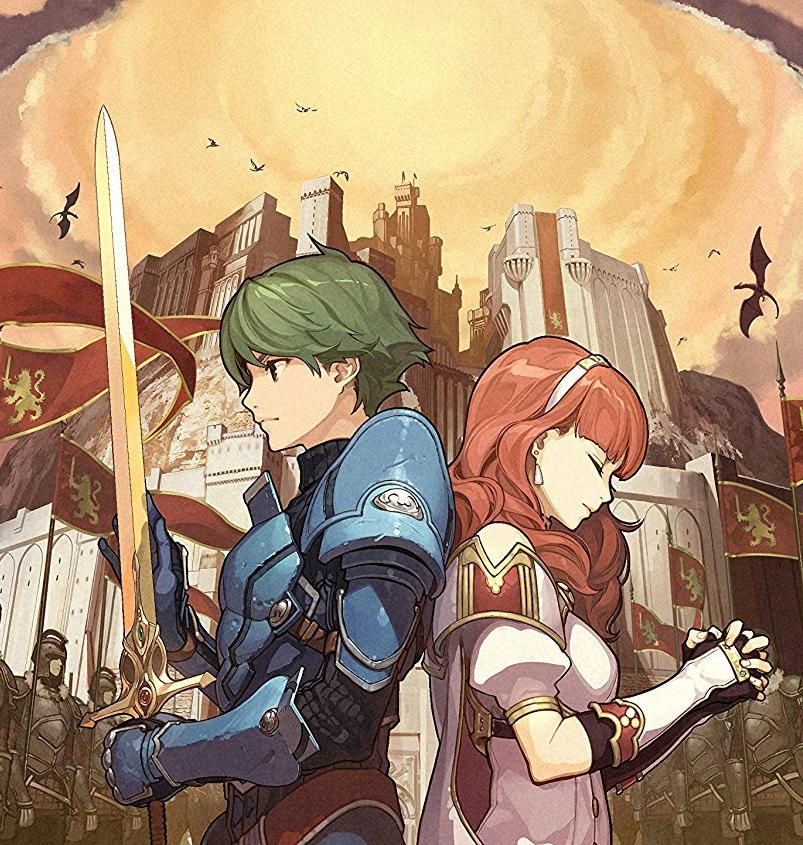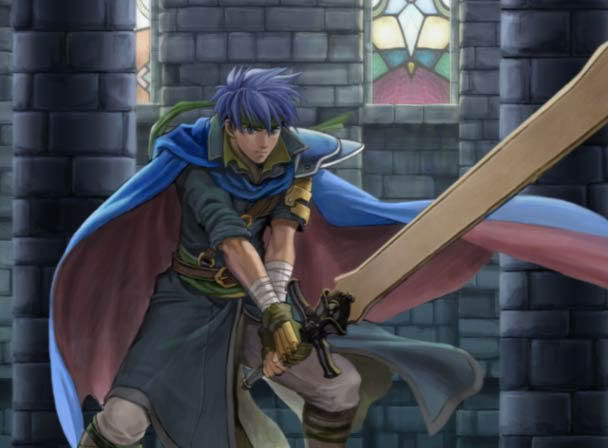The Well Developed Protagonist
- Reed Priest
- Dec 24, 2018
- 6 min read
Updated: Jan 3, 2019
Particularly in story-based games, a protagonist represents the player and acts out a game’s intended message. Although many games incorporate a protagonist by default, few games seamlessly mix them into the narrative and gameplay. Organically integrating the leading character into a game usually requires several intense, volitional design elements that fit the protagonist to gameplay, plot, the player, supporting characters, antagonists, etc. These design elements are challenging to effectively implement, but can craft a well-rounded and more believable protagonist that helps create valuable emotional investment.
Character growth

Oftentimes, a protagonist embodies the player’s several hour-long journey and overcomes a myriad of developing events. It is logical, then, to design a protagonist that progresses and evolves alongside the player. Doing so adds a sense of realism to the game, but also a feeling of camaraderie with the protagonist since the player is also growing alongside this leading character. Fire Emblem Awakening fluidly demonstrates protagonist growth through Chrom. As the leader of an army striving to rid the land of evil, Chrom endures a heavy burden of responsibility. This duress intensifies as Chrom's sister, the kingdom’s royal leader, sacrifices herself to save his honor. Now Chrom must manage his army, shoulder the kingdom, and avenge his sister’s death. Because the player participates in, rather than observes, this transition, he/she becomes more emotionally connected to Chrom’s story. With greater identifiability, Chrom’s personal growth in the execution of these goals results in meaningful motivation within the player. The player finds it encouraging and worthwhile to assist Chrom in his development, resulting in greater commitment, engagement, and enjoyment.

Valkyria Chronicles 4 depicts a similar approach through its protagonist Claude Wallace. After an initially cowardly reaction to war, Claude became ingloriously known as “Scaredy-Claude.” Despite this humiliation, he enlists in the army as a general, forcing himself to overcome his past failure and to establish new competence. The player helps articulate Claude by orchestrating his army throughout gameplay. With the player’s strong gameplay, supporting characters realize Claude’s ability and eventually learn to respect him as a leader. This growth satisfies the player because it justifies the hours he/she invested into Claude. Because Claude is the protagonist, the player works through him to execute gameplay, subsequently identifying with him. The acknowledgement of Claude’s prowess, then, similarly denotes prowess in the player and engenders worthwhile feelings of satisfaction.
Protagonist motivations

Motivations convey a richer and more realistic protagonist for enhanced relatability. They help turn a plot device character into an identifiable, believable character with which the player can empathize. Fire Emblem Echoes: Shadows of Valentia plays with clashing motivations among its dual protagonists, Alm and Celica. Both characters aim to end war, but through different intentions. Relying on power, Alm constructs a mighty army to destroy enemy invaders. Conversely, Celica relies on faith and departs on a pilgrimage to meet her deity and plan a peaceful solution. The story also intelligently divides these characters due to these motivations with a fight over how war should end: force or faith. These differing solutions challenge the player with moral ambiguity, thereby enriching both of the protagonists and the overall narrative with deep implications of how to end human suffering. If the player agrees with one or both of these protagonists’ motivations, it is easier to resonate with the game’s overarching messages. Protagonist motivations serve a variety of purposes ranging from justifying plot progression to elevating character depth. The most influential protagonist motivations, though, accomplish these goals while also connecting the player with the game’s larger themes.
Protagonist depth

Motivation in protagonists alluded to the value of character depth. Although highly important, motivations are merely one aspect of a fully flushed protagonist. Many other aspects, such as plot and dialogue, can add realism and relatability to a character. Fire Emblem: Path of Radiance and Fire Emblem: Radiant Dawn combine many of these elements to craft their protagonist Ike. As the lead character in both games, Ike enjoys plentiful time to articulate who and what he is. After the tragic death of his father, Ike is thrust into a leadership position with the Greil Mercenaries, a ragtag group of fighters whom his father previously lead. This change in plot propels Ike’s personal development, but also initiates a chain of character growth. With this new responsibility, the player observes and aids Ike’s transformation from bold child to fearless leader. This shift in authority provides a stage for Ike to express his views on fascism, racism, and self-determination across the games’ larger narratives. Although stoic, Ike is not emotionless, and the initial plot elements enable his character to express such emotion, thereby gifting the player with an enjoyably complex protagonist.

While plot mainly characterizes Ike, supporting conversations predominantly characterize Rex in Xenoblade Chronicles 2. Rex demonstrates a range of personality through cutscenes and battle; however, dialogue is most commonly used to convey his character. To rest the player after elongated cutscenes or missions, Xenoblade Chronicles 2 infuses copious conversations between the main cast, many of which are optional. Several of these discussions do not advance plot or offer new revelations to the story, but add additional color to each character. Because Rex is the cornerstone between these supporting characters, the interconnections between them collectively offer differing perspectives into Rex’s personality. Depth in protagonists can be developed through several approaches, such as through plot or dialogue, and such profundity satisfies the player with a more dynamic and intricate character to direct.
The blank slate protagonist

Completely contrary to the previous point, some games implement a bland protagonist onto which the player may project his/her feelings. The player is likely to appreciate and respect the highly intricate and directly developed protagonist; however, is is occasionally more difficult for the player to empathize and resonate with that complex protagonist due to inherent personality differences. A blank slate character, the literary “tabula rasa,” offers an alternative approach where the game incorporates a relatively bland character so that the player may easily find aspects of that protagonist that resonates with him/her. The Legend of Zelda: Breath of the Wild does so with its silent protagonist, Link. Throughout the entire adventure spanning dozens if not hundreds of hours, Link does not utter a single word. The player reads sparse descriptions of his character from various diaries scattered across the land, but Link is essentially characterless. He has no set personality, but rather, and imagined personality that the player concocts. Link embarks on a heroic journey, so the player assumes he is heroic; similarly, Link constantly eats, so the player assumes he is gluttonous. Such assumptions are based on game mechanics such as plot and gameplay, and slowly create unconscious connections that unify the player with the protagonist.

It is important for designers to effectively plan and execute an intended personality for blank slate protagonists, lest such protagonists become trite and superficial. Fire Emblem Fates exemplifies such poor blank slate protagonist construction though Corrin. As the protagonist of three separate games, Fates attempted to craft three different versions of Corrin that profoundly varied due to environmental circumstances. One story characterizes Corrin as deceptive to ultimately enact justice, while another characterizes her as unapologetically noble to reach peace. Despite the intelligent differentiation of Corrin's character design, supporting characters interact with her identically. Thus, each story depicts a mostly similar blank slate Corrin. Fates ignores the classic guidance of “show, don’t tell” by directing almost every supporting character to blindly adore the protagonist and state how the player should perceive Corrin, regardless of the games’ differing circumstances. Although such efforts aimed to ingratiate the player with a likable protagonist to embody, they ultimately lessen realism and character depth, leaving Corrin as a one-dimensional celebrity, rather than a highly conflicted child of fate. If designers intend for a blank slate protagonist, then they should let the player - not supporting characters - surmise the personality of the protagonist to ultimately construct a relatable character with which the player can empathize.
Conclusion
Protagonists drive stories, subsequently making their successful execution paramount in game design. Many elements can help create strong protagonists, yet just as many elements can dilute their relevance. Because the protagonist represents the player, a rich protagonist should typically convey aspects that the player would like to see in him/herself, such as growth, relatable motivations, and overall depth. These elements can be articulated throughout gameplay, story, dialogue, setting, cutscenes, and more. Once stories not only understand their intended protagonist, but additionally how to convey that protagonist, they gift the player with a more profoundly felt and enjoyed gaming experience based in realism and relatability.



Comments